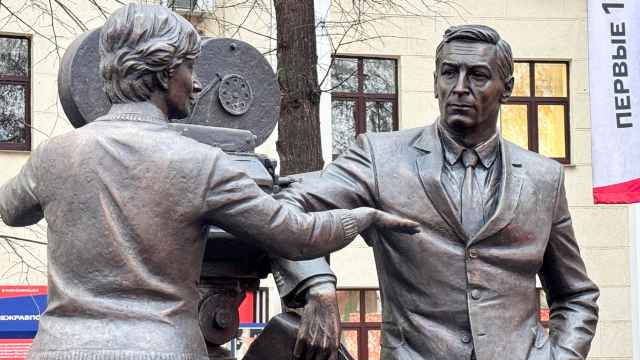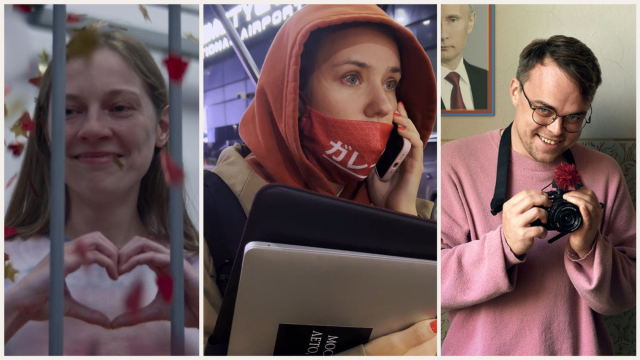Five tails of hair lie on a sofa in the photo, cut from their owners. There is a black one, two from brunettes — one dark, one light brown — and two blondes.
It’s hard to say how much hair there actually is in the photo — probably no more than half a kilogram. But that could be worth up to 20,000 rubles ($660).
The best and most expensive hair is “Slavic,” said Nastya, who buys and sells hair.
That’s not necessarily any specific color, but just the specific hair structure of your average member of that Indo-European tribe and its descendants. And it is what sells best.
If you go to any provincial town — the smaller the better — you will see a sign stuck up on a lamppost saying when the hair buyers come around. I’d like to imagine that long-haired children are hidden by parents to save them from the scalpers, but Nastya was so charming that parents probably line up for her to snip off the hair covering their teenagers’ faces.
Still, hair selling does seem like the kind of thing more likely in regions down on their luck.
The Economist should use the number of hair buyer visits as an economic indicator of a region’s wealth — although saying that, there is a sign announcing a hair buyer visit on a lamppost close to The Moscow Times office.
Nastya’s ad for Slavic hair has a long list of the different types of hair you can buy. Prices start at 40 rubles ($1.30) for extensions. A kilo of hair, 65 to 70 centimeters long — also called khvosty, or tails — costs 40,000 rubles, while a tail of 40 to 45 centimeters is only 20,000 rubles.
The hair is used to make wigs, she said. A colleague remembered that she was asked by her hairdresser when she cut her long, long locks in Soviet times whether she would donate them to a Moscow theater to turn into a wig. She did, and we briefly imagined going there — she, amazingly, had never visited her hair once — and demanding the hair back.
Nastya was happy to take the locks of my imaginary girlfriend: a brunette, with hair down to her hips, but an unfortunate problem with split ends.
“Are they still in place?” she asked.
Fresh is good, I realized. “Yes, they are in place.”
“She’s English, not Slavic,” I lied. But Nastya, to give her credit, reassured me, “They’re not worse.”
She said she would have to take a look for herself because the price depended a lot on the quality of the hair and its size and shape.
She preliminarily offered about 3,000 rubles for the non-Slavic hair.
A Message from The Moscow Times:
Dear readers,
We are facing unprecedented challenges. Russia's Prosecutor General's Office has designated The Moscow Times as an "undesirable" organization, criminalizing our work and putting our staff at risk of prosecution. This follows our earlier unjust labeling as a "foreign agent."
These actions are direct attempts to silence independent journalism in Russia. The authorities claim our work "discredits the decisions of the Russian leadership." We see things differently: we strive to provide accurate, unbiased reporting on Russia.
We, the journalists of The Moscow Times, refuse to be silenced. But to continue our work, we need your help.
Your support, no matter how small, makes a world of difference. If you can, please support us monthly starting from just $2. It's quick to set up, and every contribution makes a significant impact.
By supporting The Moscow Times, you're defending open, independent journalism in the face of repression. Thank you for standing with us.
Remind me later.






